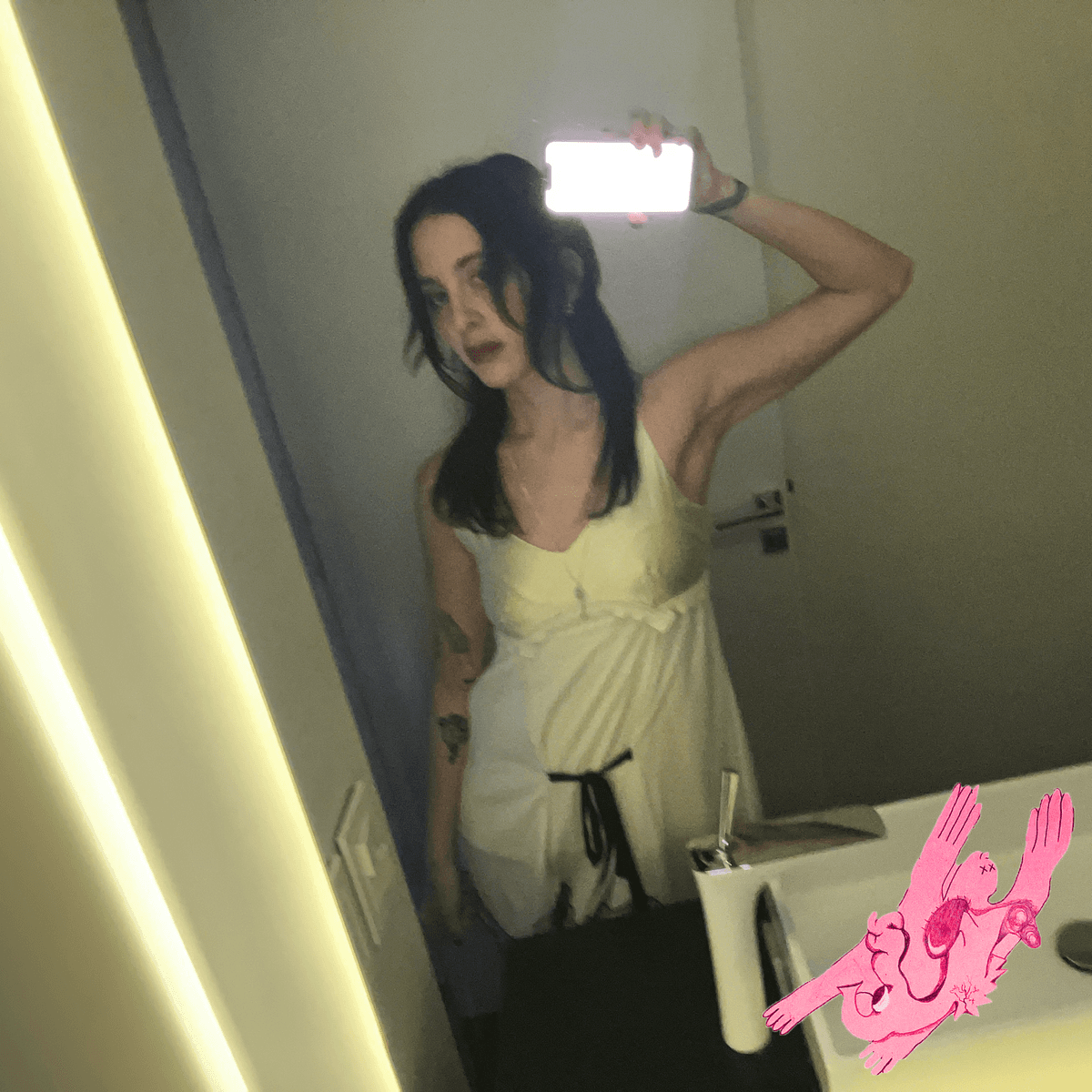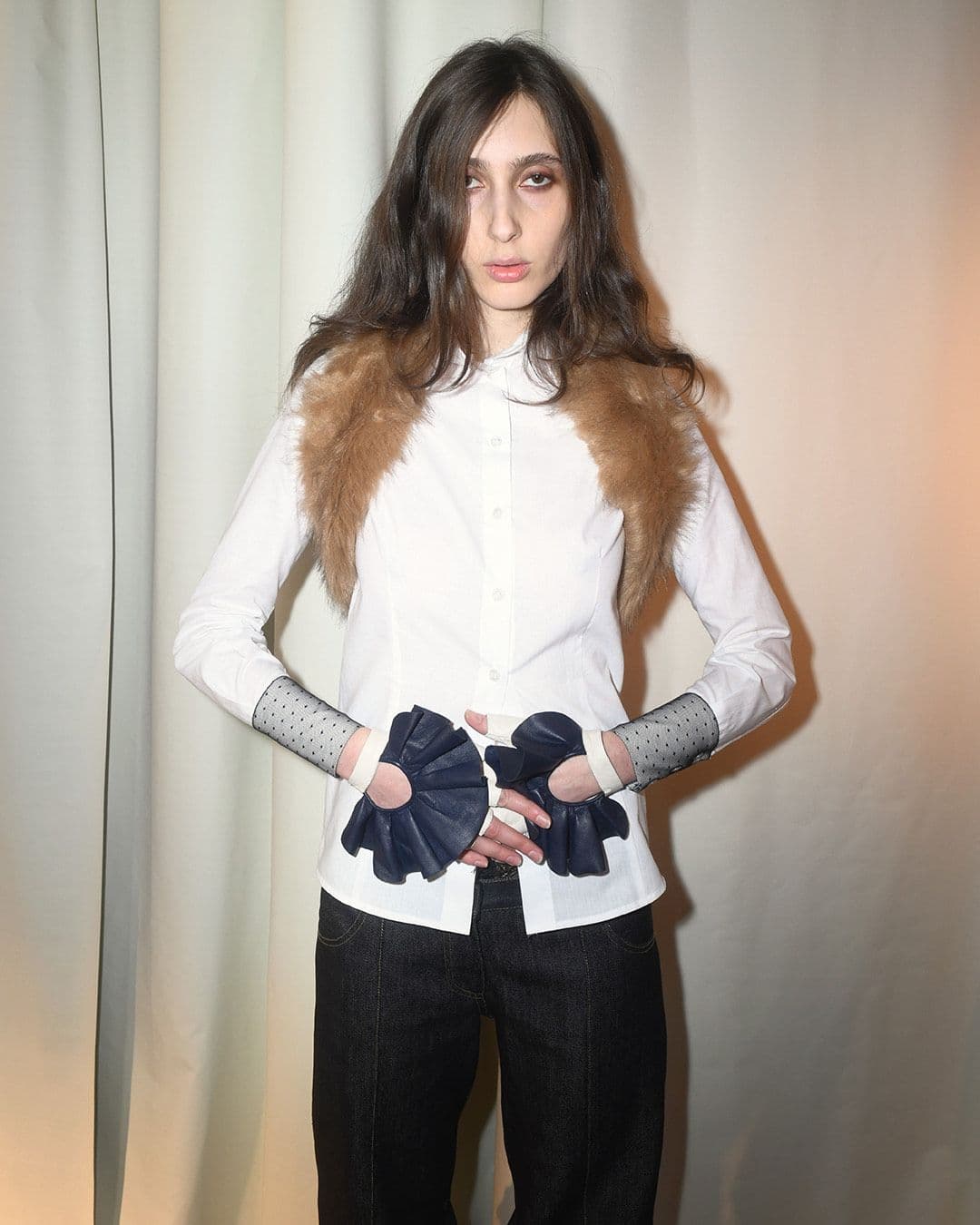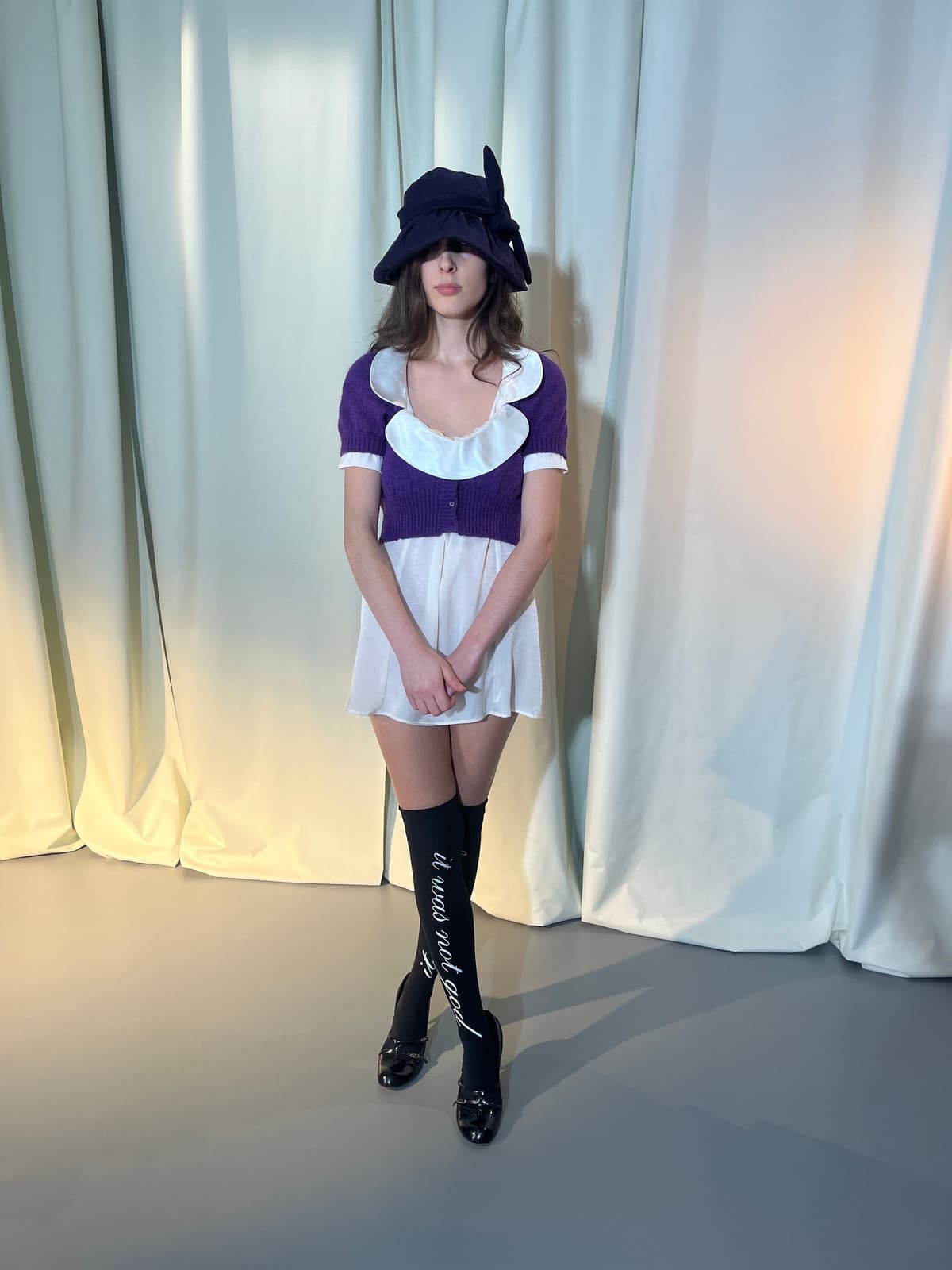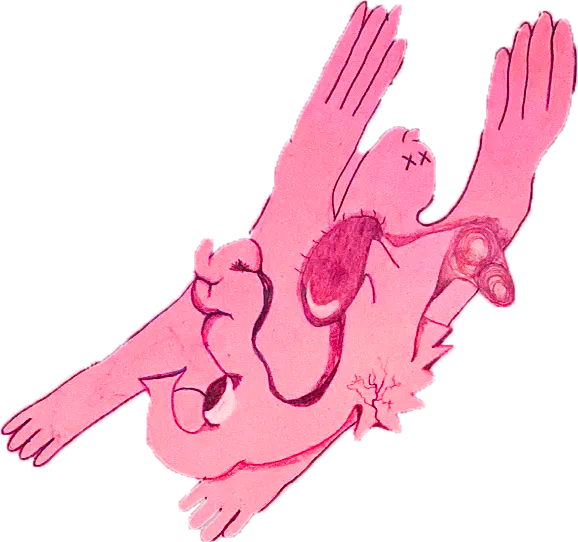GIRLISH INNOCENCE/FEMALE HYSTERIA
Lucila Safdie

I’m not sure what causes female hysteria, but I love it. I’m interested in women who feel inadequate, women who feel out of place where they are, or women who feel like they’re somewhere they’re not supposed to be.
TESS POLLOK: You’re a London-based fashion designer–I was obsessed with your SS25 collection, Farewell Princess. You have such a knack for combining unapologetically feminine materials with these unexpected, tomboyish cuts. I was a big fan of the recent article in Hypebae that praised your ability to “evoke girlish innocence” with your designs. There’s a running theme across your collections of Hollywood’s Golden Era and the tragic female hysteria of heroines from that period. You just released a new collection?
LUCILA SAFDIE: Yes, my latest is called Somewhere Nowhere. I just released it a month ago. It’s similar to Farewell Princess in that it’s inspired by Hollywood actresses–specifically, three of my favorite women characters from that era of film. Wanda from Wanda, portrayed by Barbara Loden, Gina Rowlands as Mabel in A Woman Under the Influence, and Monica Vitti as Giuliana in Red Desert. Thematically, it’s linked by women who live in these more…how do I say it? Classically restrained domestic environments. When they want to escape, it becomes difficult for them because they fail to comply with the norms and standards of those environments. What I was really interested in with this collection was women who are considered crazy, for whatever reason, but usually because they’re rebelling against these kinds of confining environments.
I’m inspired by great women with most of my collections and this is a longstanding theme of my work. My third collection was obviously inspired by the life of Sylvia Plath and Farewell Princess was primarily inspired by Grace Kelly and Marilyn Monroe. I’m interested in women who feel inadequate, women who feel out of place where they are, or women who feel like they’re somewhere they’re not supposed to be.

Model in pieces from Somewhere Nowhere
POLLOK: What do you think causes female hysteria?
SAFDIE: I’m not sure, but I love it. I guess it’s a societal justification for why women are more emotional and expressive than men. I see it as a sensibility. It’s a reaction to the world that’s much more sentimental than what men experience.
POLLOK: Completely. I was once hospitalized for having a hysterical episode and I was jealous of women from the early 1900’s because they used to give them orgasms with medical vibrators.
SAFDIE: We need to bring that back. I want a lobotomy.
POLLOK: [Laughs] Are you sure? Some women don’t come back from that normal afterwards.
SAFDIE: Okay, it depends. I wouldn’t do it if I couldn’t talk afterwards, but if it would just help me be less emotional, then yes, I would definitely do it. It can be contradictory as an artist and as a woman to be sensitive and emotional. It can be a great asset to your work, but it can be so overwhelming when you’re trying to do a job in the real world and have to behave. I feel like I’ve gotten better at managing it now but it can be difficult. It was a lot harder when I was younger.
POLLOK: I really appreciate what you’re doing with your collections. It feels like you’re surfacing women’s inner worlds and that’s something I can feel in the designs.
SAFDIE: Designing has always been an intuitive process for me. I just mix the topics that I’m interested in at the moment, for example, the actresses I love, or if I’m listening to certain podcasts or reading a specific genre of fiction. They all influence each other, but not in a conscious way. I design a lot looking at my own clothes and what the women who inspire me used to wear. The feelings that I’m having about the art I’m currently consuming mix with those feelings of admiration and that’s how I design and ultimately curate a collection. It’s always been an entirely unconscious process with me–I’m never, like, I’m going to deliberately put this ruffle here because ruffles evoke femininity.
POLLOK: Do you have women characters who inspire your work outside of cinema? You mentioned reading and podcasts.
SAFDIE: Totally. I grew up loving books and movies. My dad forced me to read when I was growing up, which at the time involved exposing to me a lot of male writers. They lost my interest as I grew older, but it created the habit of being a reader in me. When I had more autonomy over what I was reading, I gravitated towards women writers. It’s not that I don’t read male writers anymore, because I do, but I identify with women writers so much more. When I read The Bell Jar for the first time as a teenager, I was, like, god damn, this hits.
At the moment, I’m very inspired by Deborah Levy. I love her work. I have some more obvious influences, as well, like Joan Didion and Clarice Lispector. Anne Sexton is my favorite poet. Well, Sylvia Plath is my favorite poet, and then Anne Sexton.
POLLOK: Do you feel like your interest in these themes has evolved over time as your design work has matured?
SAFDIE: Yeah, I do think so. This brand started as a small project with friends just to kill time and that’s still true even as we’ve broadened our reach. Most of the people I work with personally are still my friends or my boyfriend. I didn’t set out to make money off of designing clothes, at all. Something I still struggle with, and I think many designers struggle with this, is how to develop my designs in a way that feels interesting and challenging for me and at the same time, how can I make enough money to feed this business and be able to continue my design work. I try to be considerate of my audience, as well–for example, I know a lot of young girls like to wear my clothes, so I try not to make things that are overly elaborate or that they could never hope to afford.
POLLOK: Who inspires you in the world of fashion design?
SAFDIE: This is a basic answer but a very true one: Miuccia Prada. When I was younger, I looked up to her, and I still think she had the best approach to fashion in the world. She’ll always be the designer that has my heart.
POLLOK: Have you always wanted to be a designer?
SAFDIE: Yes, it’s always been my passion, even when I was young. I remember when I was a kid my therapist used to have me sew in my sessions and that turned into an obsession for me, to the point where my parents bought me my own little mannequin and mini sewing machine. My therapist would help me sew and then we’d go to the haberdashery shop together.

Model in pieces from Somewhere Nowhere
POLLOK: Wow, that’s such an enchanting image. I wish I had your childhood. Now that you’re an adult, how do you feel about fashion as an industry? Has it changed since you were a kid?
SAFDIE: I see it as being somewhere in the middle of good and bad right now. I try to always watch the latest Miu Miu and Prada shows for obvious reasons. I always watch Louis Vuitton because I really like Ghesquière’s work. I try not to look at other young designers too much because I want to stay focused on doing my own thing. If I’m distracted, I’ll just get overwhelmed thinking about figuring out the best way to be a designer. So I try to watch my movies, listen to my music, do my own thing, and work on a fashion brand for myself.
Lucila Safdie is a London-based fashion designer. Her latest collection, Somewhere Nowhere, is available now.
Tess Pollok is a writer and the editor of Animal Blood.
← back to features
